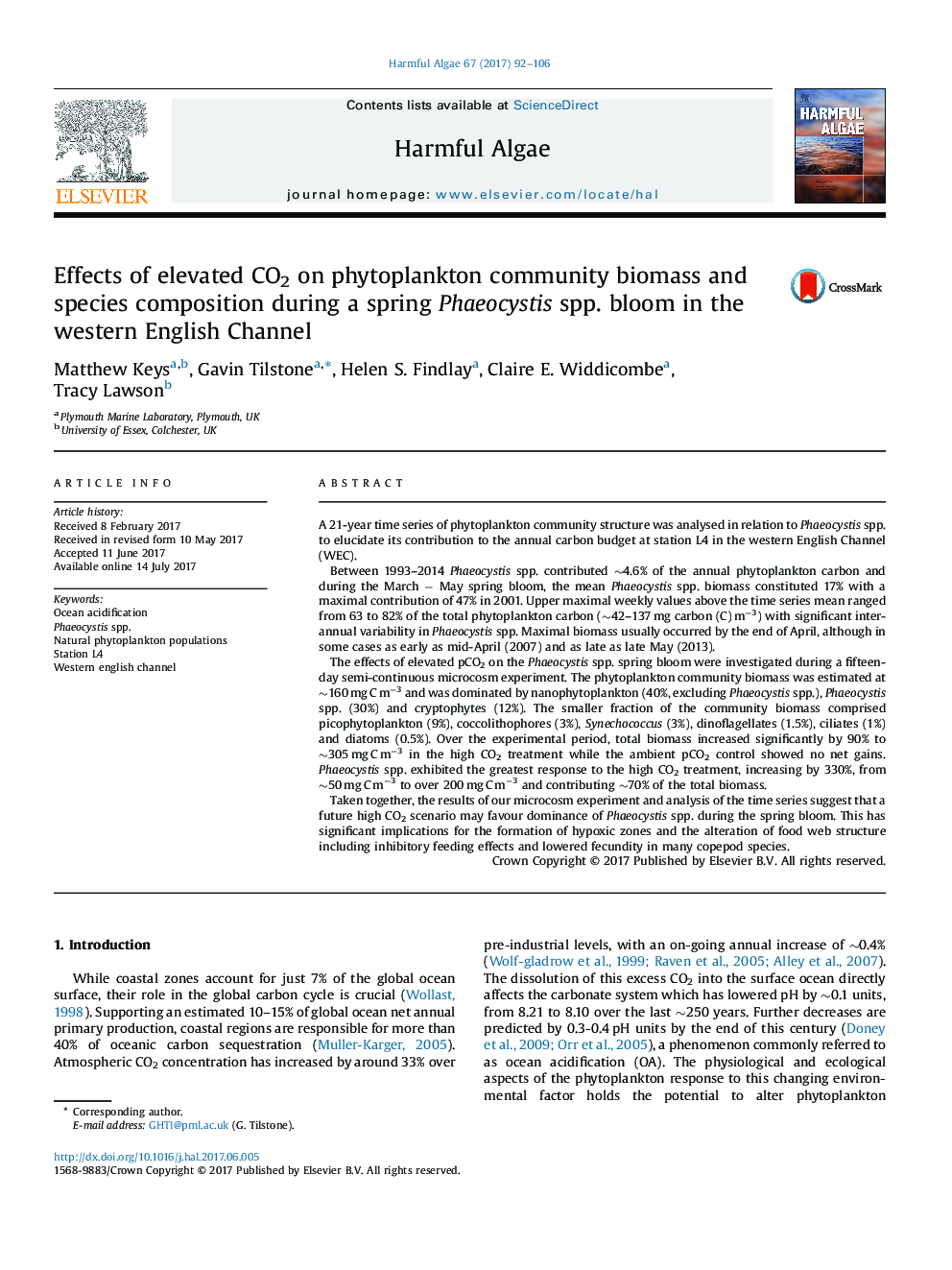| کد مقاله | کد نشریه | سال انتشار | مقاله انگلیسی | نسخه تمام متن |
|---|---|---|---|---|
| 5765718 | 1626905 | 2017 | 15 صفحه PDF | دانلود رایگان |

A 21-year time series of phytoplankton community structure was analysed in relation to Phaeocystis spp. to elucidate its contribution to the annual carbon budget at station L4 in the western English Channel (WEC).Between 1993-2014 Phaeocystis spp. contributed â¼4.6% of the annual phytoplankton carbon and during the March â May spring bloom, the mean Phaeocystis spp. biomass constituted 17% with a maximal contribution of 47% in 2001. Upper maximal weekly values above the time series mean ranged from 63 to 82% of the total phytoplankton carbon (â¼42-137 mg carbon (C) mâ3) with significant inter-annual variability in Phaeocystis spp. Maximal biomass usually occurred by the end of April, although in some cases as early as mid-April (2007) and as late as late May (2013).The effects of elevated pCO2 on the Phaeocystis spp. spring bloom were investigated during a fifteen-day semi-continuous microcosm experiment. The phytoplankton community biomass was estimated at â¼160 mg C mâ3 and was dominated by nanophytoplankton (40%, excluding Phaeocystis spp.), Phaeocystis spp. (30%) and cryptophytes (12%). The smaller fraction of the community biomass comprised picophytoplankton (9%), coccolithophores (3%), Synechococcus (3%), dinoflagellates (1.5%), ciliates (1%) and diatoms (0.5%). Over the experimental period, total biomass increased significantly by 90% to â¼305 mg C mâ3 in the high CO2 treatment while the ambient pCO2 control showed no net gains. Phaeocystis spp. exhibited the greatest response to the high CO2 treatment, increasing by 330%, from â¼50 mg C mâ3 to over 200 mg C mâ3 and contributing â¼70% of the total biomass.Taken together, the results of our microcosm experiment and analysis of the time series suggest that a future high CO2 scenario may favour dominance of Phaeocystis spp. during the spring bloom. This has significant implications for the formation of hypoxic zones and the alteration of food web structure including inhibitory feeding effects and lowered fecundity in many copepod species.
Journal: Harmful Algae - Volume 67, July 2017, Pages 92-106